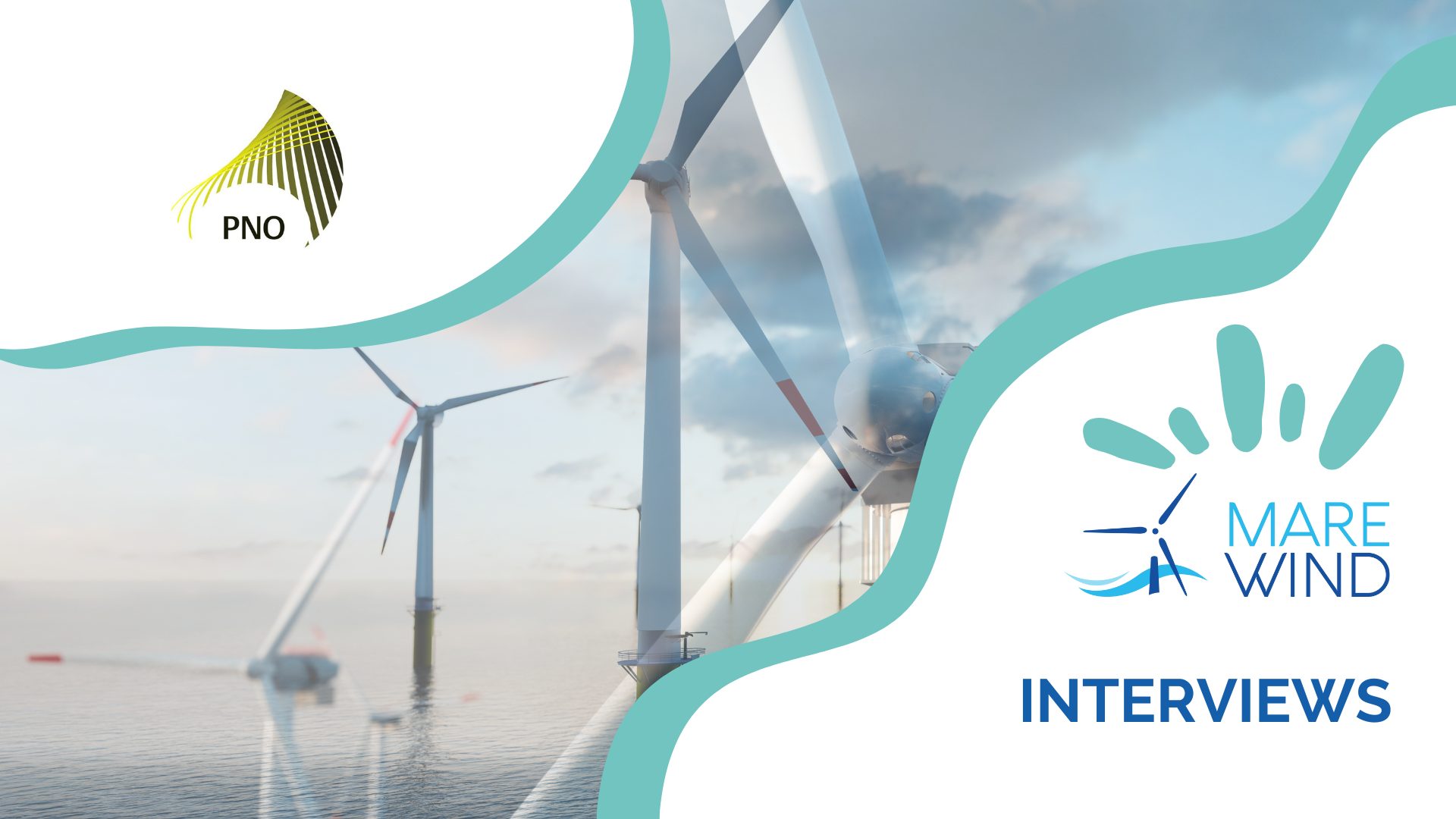PNO Consultants, contributing to the European renewable energy targets
01 July 2024
Why did you join the MAREWIND project and what’s your role?
PNO Innovation was invited to participate in MAREWIND and gladly accepted the challenge to offer the company’s consultancy services and well-established expertise to the project’s benefit. The main target of MAREWIND is to develop advanced durable materials and recyclable solutions which reduce materials use contributing to the European Union’s climate goals. This is in line with our commitment at PNO to support various stakeholders elaborating innovative solutions to tackle the challenges that the energy sector is facing. Furthermore, our proficiency in communication, dissemination and exploitation activities enabled us to confidently take the lead in establishing and executing a strategic plan for identifying and engaging with key stakeholders in the energy and other markets.
As market leader in subsidy and innovation advice, what are your ambitions in contributing to the European renewable energy targets?
PNO actively supports numerous companies in developing their ambitions and actualising their technology roadmaps for the future. By identifying transformative innovations that reshape their operations and conceptualising innovative projects centred around strategic technologies and markets, we help pave the way for their success. To release this vision, we leverage over 500 available public funding mechanisms across Europe, to support our clients in creating industrially driven innovative projects and concepts.
Moreover, we are committed to providing strategic advice that encourages the adoption of sustainable practices, ultimately facilitating the sector’s transition towards greener and more efficient operations. Our goal is to play a pivotal role in facilitating positive change, helping businesses thrive while minimising their environmental impact.
PNO is leading Communication and Dissemination activities within the MAREWIND project. How would you assess the significance of reaching the public audience to showcase the importance of a more efficient and renewable energy system?
We believe that reaching the public audience is crucial on multiple fronts. Firstly, engaging the public fosters awareness and help supporting sustainable practices and standards. Secondly, policymakers can be influenced by this public support, playing a key role in shaping a favourable environment for new innovative initiatives that drive a more sustainable and durable wind energy sector. Additionally, these actions can encourage wind energy industry to adopt and promote sustainable practices.
In summary, reaching the public audience not only raise awareness but also catalyses a collective effort towards a more sustainable society and efficient industrial landscape.
Given the technical nature of the project, how do translate complex information into clear and accessible messages for both industry experts and the broader public?
Our approach involves a strategic translation of complex information into clear and accessible messages tailored for both targeted groups. We employ different tools including simplified visualisations and articles with less-technical language. For example, for a wider audience we draft public-facing materials using simple terms and emphasising the project’s significance and benefits in a related manner, while for industry experts, we provide in-depths technical documentation. This approach aims to bridge the gap between technical and complexity from one side, and accessibility from the other side, reaching several targeted groups.
How would you explain to a wider public what will be the impact of the MAREWIND project?
The primary difficulty with the offshore wind structures is the durability of the materials and maintenance which consequently imply failures, misfunctioning, loss for efficiency in energy generation and which have a major repercussion on O&M and CAPEX. MAREWIND is expected to highly impact the EU wind energy industry, which is projected to have the largest contribution to the renewable energy targets for 2030. It will strengthen the European leadership position in the industry as well as optimise the sector. Moreover, it will help reduce Europe’s energy dependance and thereby delivers significant macroeconomic benefits.
How do you see the future of the MAREWIND project?
The MAREWIND project is set to significantly impact the future of the European energy sector by making offshore wind turbines more efficient, durable, and cost-effective. One major impact of MAREWIND’s innovations is the reduction in the Levelized Cost of Energy (LCOE). By extending the operational lifespan of wind turbines through advanced antifouling and anticorrosion coatings, the project reduces the frequency of maintenance and repairs. This means that wind farms can operate more consistently and at higher efficiency, leading to a lower overall cost of electricity production. Moreover, the use of carbon-reinforced composite materials for wind turbine blades will make the turbines lighter and more efficient. This reduction in weight will decrease the mechanical strain on turbine structures, enhancing their efficiency and longevity. As a result, energy production becomes more reliable and cost-effective, contributing to a more stable and affordable energy supply.
In summary, the MAREWIND project will significantly lower the costs associated with offshore wind energy, enhance the reliability and efficiency of wind farms, and position offshore wind as a leading source of renewable energy in Europe. These impacts will drive the growth of the offshore wind sector, contributing to Europe’s transition to a sustainable and economically viable energy future.

